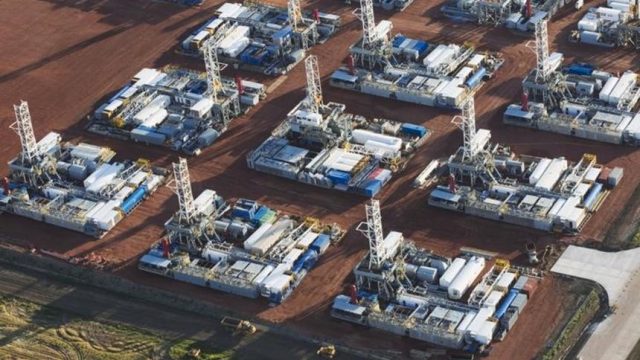Not Rock Bottom Yet: North Dakota’s August Revenues Come in $9 Million Under Forecast

Stacked rigs are seen along with other idled oil drilling equipment at a depot in Dickinson, North Dakota June 26, 2015. REUTERS/Andrew Cullen
Revenue forecasting in North Dakota has been a train wreck over the last several years. During the peak of the oil boom years revenue forecasts understated revenue by billions. Now that the oil boom is over, the forecasters have understated revenues by billions.
For a state that budgets based on revenue forecasts, this is an untenable situation. Especially since the latest revenue report from the Office of Management and Budget (see below) shows General Fund collections coming in below even the most recent forecast from July.
Since the beginning of the 2015 legislative session the State of North Dakota has done four revenue forecasts, each one downgrading significantly the general fund revenues the state expects to collect, and held a three-day special legislative session so that lawmakers could adjust the budget to be in line with falling revenues.
In August the OMB reports that General Fund revenue collections came in more than $9 million less than the July 2016 forecast predicted (click for a larger view):
So far in this biennium, compared to the last biennium, General Fund revenue collections have declined by more than $488 million, or nearly 15 percent.
It’s troubling that revenues are still under performing even the July forecast. Especially since lawmakers used that forecast to adjust budget during the special session earlier this year.
It may be that the state still doesn’t have a handle on how far revenues are going to fall, which is just amazing. As anyone can see from the chart above, the problem is the sales tax. The state keeps overestimating sales tax collections. That’s been the problem with previous forecasts and now, apparently, it’s the problem with this one.
The one silver lining is that while revenues have fallen down from the last two bienniums, where revenues spiked because of the oil boom, they’re still significantly higher than the pre-oil boom bienniums. This chart shows the current biennium’s cumulative revenues to date, compared to the previous four bienniums through the same point:
The state’s revenues are down from oil boom peaks, but they’re still significantly higher than pre-oil boom levels.
It will be painful, but all the state has to do is get government spending back down to something approaching pre-oil boom levels. Easier said then done. But then that’s usually the case isn’t it?
Growing government spending usually meets with little resistance. Reducing government spending turns into a political knife fight.
[scribd id=325054759 key=key-jPF0AdNtP5mslobqFvm6 mode=scroll]





